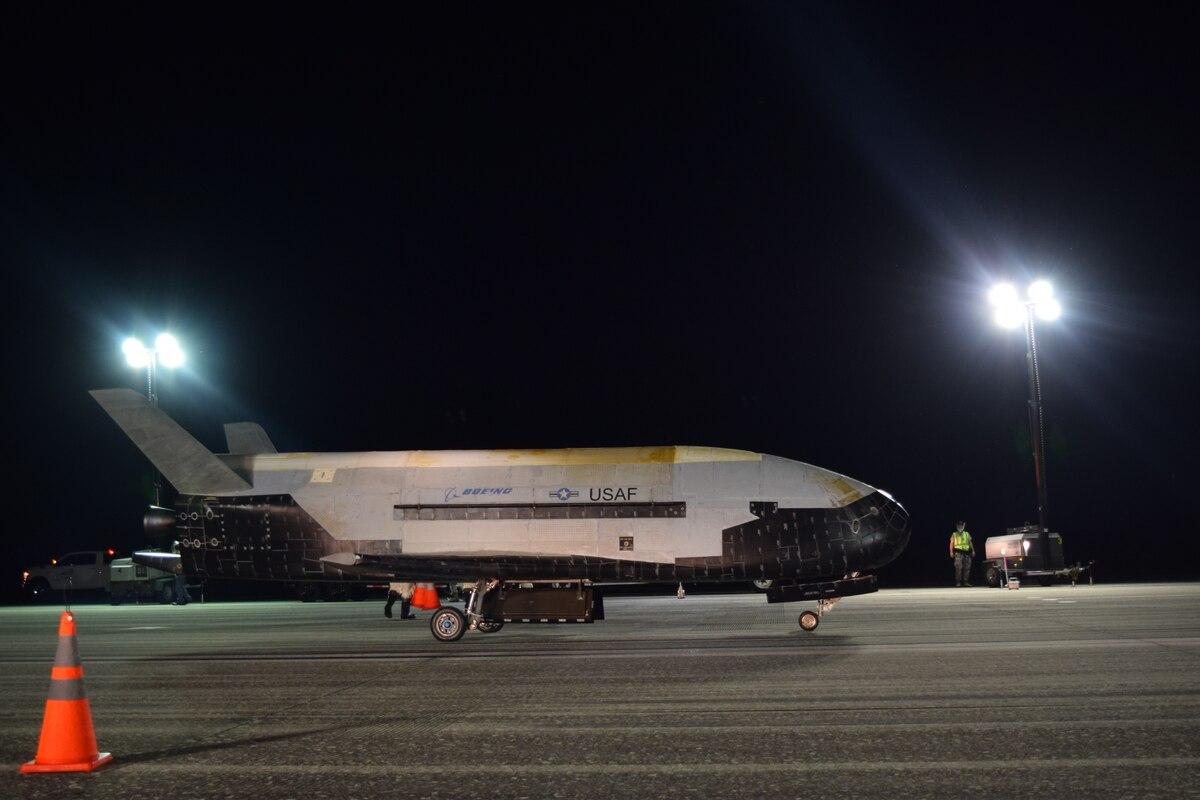
What was the Boeing-made plane doing in space for the two years it spent circling Earth? On that point, the Air Force is characteristically elusive, describing the X-37B’s activities as “on-orbit experiments” in a news release.
“The X-37B continues to demonstrate the importance of a reusable spaceplane,” Air Force Secretary Barbara Barrett said. “Each successive mission advances our nation’s space capabilities.”
According to the Air Force, the unmanned spaceplane is unique because it allows scientists to test experimental technologies in space for long periods of time.
One of those technologies confirmed to be on board the X-37B is the Advanced Structurally Embedded Thermal Spreader, or ASETS-11, created by the Air Force Research Laboratory to “test experimental electronics and oscillating heat pipes in the long duration space environment,” the service said in 2017.
“This program continues to push the envelope as the world’s only reusable space vehicle. With a successful landing today, the X-37B completed its longest flight to date and successfully completed all mission objectives,” said Randy Walden, head of the Air Force Rapid Capabilities Office. “This mission successfully hosted Air Force Research Laboratory experiments, among others, as well as providing a ride for small satellites.”
X-37B Orbital Test Vehicle Mission 5 ended at 3:51 a.m. after the spaceplane landed on the runway of Kennedy’s shuttle landing facility on Sunday. That mission began Sept. 7, 2017, when the X-37B took off from Cape Canaveral Air Force Station, Florida, on board a SpaceX Falcon 9 rocket — marking the first launch of the X-37B by Elon Musk’s space company.
So far, the X-37B has spent 2,865 days on orbit cumulatively over its five missions, with four of those missions extending past the 270-day on-orbit duration requirement to which the plane was designed.
The Air Force plans to launch a sixth mission in 2020 out of Cape Canaveral.
The service has two X-37Bs, which Walden characterized as “workhorses” during a Oct. 24 event, according to Breaking Defense. When asked whether the Air Force should buy additional spacecraft or execute a follow-on order, Walden was noncommittal.
“The data is still out,” he said, adding that the two existing X-37Bs are “doing quite well.”